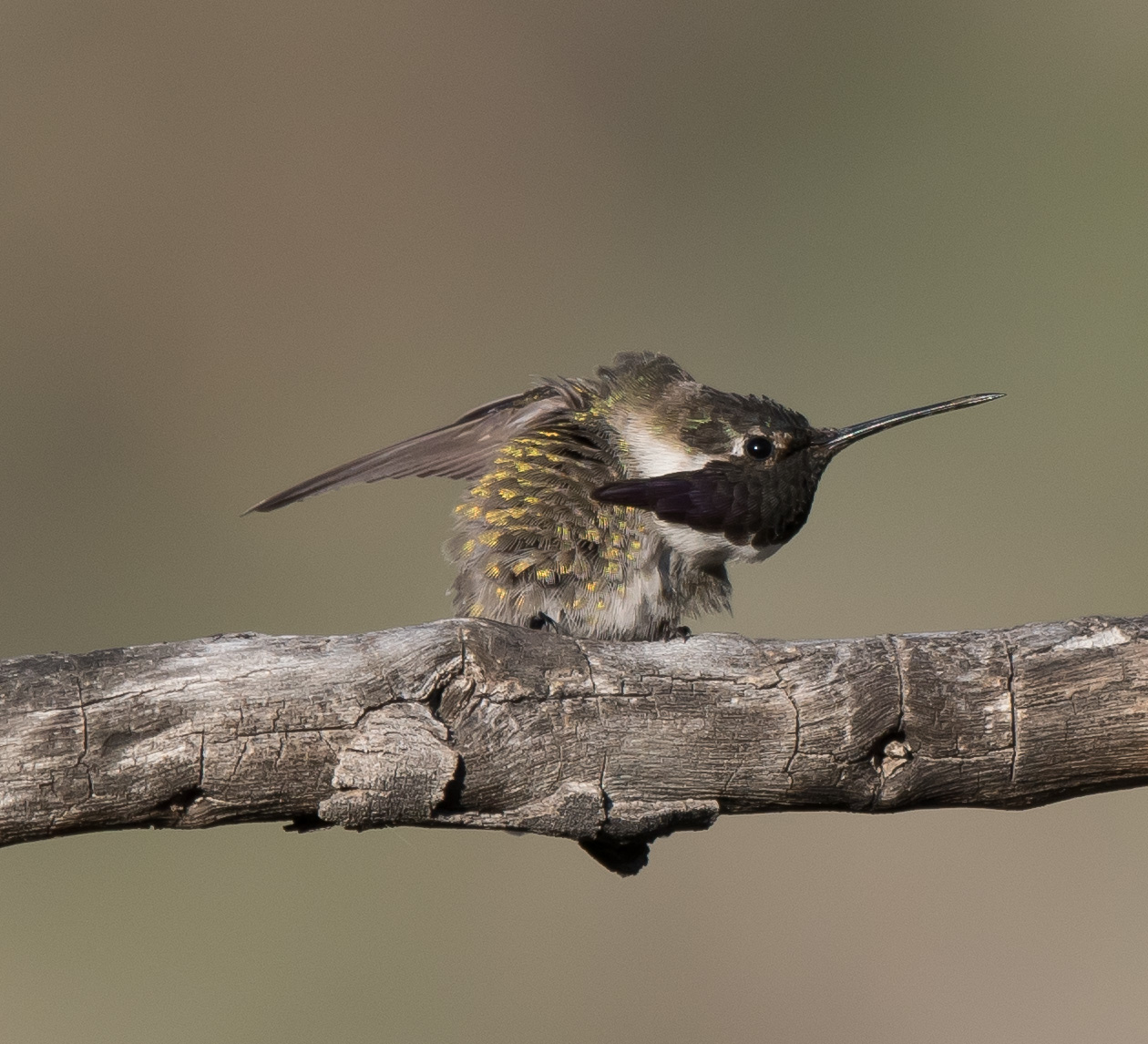El Sumidero was so special and with better weather, we had many more birds and better photo opportunities. Probably my most favorite bird of the day was the Barred Antshrike. It was a bird that I had seen on the color plates of my Mexico bird guide and was fascinated by its erected crest. It belongs to a large family of birds called Antbirds. This bird is definitely not the most colorful, but the male's overall black and white barring is still quite spectacular in my opinion.
Barred Antshrike
Barred Antshrike
Even though the Barred Antshrike was my personal favorite bird of the day, probably the more special bird for everyone in the group including the guide, was a Blue Seedeater. A fairly uncommon bird who's abundance and distribution is closely tied to seeding bamboo. The guides had scouted many of these places in advance and knew that one was in the vicinity of one of the trails we explored. Sure enough, we were able to get it to make an appearance. Another bird that was definitely not the most colorful, but a great bird to add to my list.
Blue Seedeater
Blue Seedeater
We were fortunate to find a couple of species of trogons in this area as well. This a really cool family of birds and the Elegant Trogon that is found in Arizona is probably one of, if not the most, sought after bird in AZ as no other trogons can be found in the United States and the Elegant Trogon is a breeder in southeast AZ. But on this trip, we had a couple of other species to add to our lists; the Collared Trogon and the Gartered Trogon.
Collared Trogon
Gartered Trogon
One of the new hummingbirds that I was able to add to my list was Canivet's Emerald. Emeralds are small hummingbirds that are mostly a bright emerald green with straight bills that are red, tipped with black, and tails are forked. Canivet's Emerald male has a deeper forked tail than the female.
Canivet's Emerald
Orioles are sometimes a confusing group of birds and some can be hard to identify. The Bar-winged Oriole is one such bird. It reminds me of the Scott's Oriole that we have in Arizona, but there are subtle differences. The Bar-winged Oriole has only 1 white wing bar and 1 yellow wing bar whereas the Scott's Oriole has 2 white wing bars. The Bar-winged Oriole also has a shorter and slightly decurved bill compared to a long straight bill on Scott's Oriole. Ranges are also quite different so it helps to know what to expect in your location. We were lucky to add this bird to our list as well.
Bar-winged Oriole
Bar-winged Oriole
And just like my first post on El Sumidero, we have more butterflies to add to this post. Once again, I identified them to the best of my ability, but could use help if anyone is reading this and cares to comment on them.
One of the Swallowtail species
Unknown
Unknown
Elf
Guatemalan Patch
Mexican Silver Spot
Red Rim
A species of skipper
Tropical Checkered Skipper
White-patched Skipper
It is really hard to ignore butterflies when they come in all shapes, colors, and sizes. And some of them can prove to be a bit tricky to photograph, especially since I only have a fixed 300 mm zoom lens. Both Chris and I liked El Sumidero so much that once all the planned trips were complete and most had departed for the states, we returned to this spot on our own. That will be covered in a future blog post.


























































